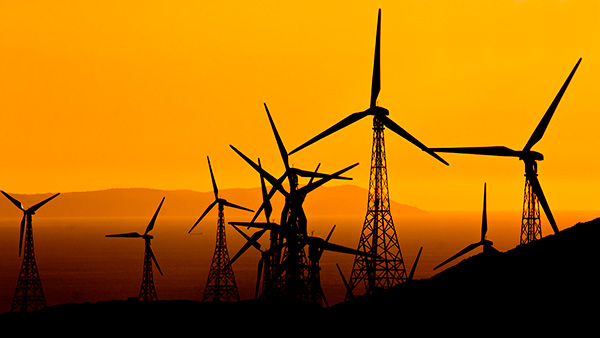Original version in Spanish: Cambio climático en 2018: de la gobernanza climática global post Trump a España
Theme
What climate change developments are foreseeable in 2018 at the global level, in the EU-28 and in Spain?
Summary
The year 2018 promises advances in the development of the implementing guidelines for the Paris Agreement and in the evaluation of progress towards the objective of limiting average temperatures to well below 2-degrees Celsius above pre-industrial levels. The EU will push the development of the Energy Union, and it is expected to raise the ambition of its renewable energy and energy efficiency targets for 2030, among other actions. Spain will present the first draft of the Climate Change and Energy Transition Law.
Analysis
Global climate governance in 2018
This year will be key for global climate governance. During 2018, the Talanoa Dialogue will take place –the first formal evaluation by the international community of its progress towards the objective of limiting the increase in global mean temperatures to well below 2-degrees Celsius above pre-industrial levels–. The importance of the Talanoa Dialogue, and of the reports and contributions which inform it,1 resides in its potential to influence the new round of emissions reduction commitments to be presented in 2020 by the Parties to the Paris Agreement.
In addition, 2018 is the deadline agreed for designing the implementation guidelines for the Paris Agreement. The will guide the transition towards a low-emissions economy, ensuring that the Paris Agreement objective is met, while leaving no one behind. The negotiation texts that came out of the Bonn Climate Summit (COP23) in 2017, under the presidency of Fiji, are technical texts that include the positions of all the Parties. In 2018 the negotiation texts will need to be condensed and, therefore, the proposed options within these texts must be narrowed to reach a consensus version of the implementation guidelines. This is a herculean task that will require an additional negotiation meeting beyond the typically planned-annual programming, if such implementation rules are to be agreed in time for the COP24 in Katowice, Poland, at the end of 2018.
Trump, year II
After announcing his intention to withdraw the US from the Paris Agreement and launching the dismantling of Obama-era federal energy and climate policies, it seems likely that Donald Trump will continue to pursue his isolationist and denialist policy turn in 2018. This is likely to be the case as none of the developments in 2017 made Trump reflect at all –not the existing scientific consensus on climate change, nor the extreme weather events of 2017 which cost the US a handsome US$ 306 billion, not the consideration of the Department of Defense (at least until December 2017)2 that climate change constituted a threat to national security, nor the concerns of the citizenry.
What is more, at the end of 2017 and the beginning of 2018, the US Department of the Interior rescinded the regulation pertaining to hydraulic fracking on public land, revised the security regulations for offshore exploration and proposed allowing oil exploration in practically all US coastal waters. For the energy-climate nexus, perhaps the most important developments in 2018 at the federal level (apart from those already underway) will be the replacement of the Clean Power Plan, a review of water regulation and the organisation of a debate on climate change that Scott Pruitt presents as ‘necessary and centered upon the needs of the present, avoiding speculation on what might occur in the future’. A debate that seems to ignore the scientific and political consensus that made possible the Paris Agreement.
The reaction of US states, business communities and citizens could hold the line against some of the retreat in climate policy that Trump will in all likelihood keep pursuing in 2018, similarly to what happened in 2017. One should also expect to see more fossil fuel divestment initiatives and an increase in climate litigation along the lines of the actions taken early on in 2018 by the Mayor of New York, Bill de Blasio, or the proposal forwarded by the city councillors of Los Angeles, Mike Bonin and Paul Koretz, that oil companies compensate for damages derived from extreme weather events which are aggravated by climate change.
Europe
In 2018 the EU is expected to make some important decisions with respect to the transition to a low carbon development model. Among other objectives, the work programme of the Commission in 2018 includes the task of completing the Energy Union. During the first half of the year, the trilogues will also take place (these are ‘informal tripartite meetings attended by representatives of the European Parliament, the Council and the Commission’) on the Renewable Energies Directive, Energy Union Governance, the Energy Efficiency Directive and Electricity Market design. With texts already in progress and Member State positions still in conflict, negotiations in 2018 are expected to be intense. Other important decisions expected in 2018 include the establishment of a carbon budget for the decarbonisation of the economy by 2050, on increasing the renewables target to 35% for 2030 and on increasing the energy efficiency target to 35%, as well, for 2030. In addition, this year the Member States must present their Integrated Energy and Climate Plans with a time horizon to 2030 which, according to the Commission, must be ambitious and coherent enough in their contribution to regulatory stability to foster investment in the low carbon economy.
Regarding the two main instruments of European climate policy, 2017 saw the conclusion of the 6th trilogue on the reform of the European Emissions Trading System (EU ETS) and with a provisional proposal for the Effort Sharing Regulation (ESR) to reduce emissions in diffuse sectors. On January 17 2018 the permanent representatives of the Council of the EU approved a provisional agreement on the ESR, reached by the Estonian Presidency and the European Parliament in December 2017. The agreement includes mandatory emissions reduction targets between 2021 and 2030 in the diffuse sectors not yet included in the EU ETS (like the commercial, residential and transport sectors).
On institutions and actors, the European Parliament, almost as a matter of habit, is typically a more ambitious actor on climate change than the Member States, many of which are more reticent in their approach to the energy transition, and this is expected to continue in 2018. Angela Merkel must try to recover part of her country’s climate leadership credibility, which has been damaged by the announcement that Germany is not likely to meet its climate objectives for 2020, and by an address at COP23 in which German dependence on coal and the social costs of transition were emphasised more than decarbonisation goals. Regaining German climate leadership could occur as a result of continued efforts by Angela Merkel at the G20 to limit the impact of Trump’s actions and subject to the expected formation of a coalition government between the CDU/CSU and the SPD, if such an eventual coalition were to push ambitious climate and energy transition objectives. Although it seems clear that Germany will not meet its objective to reduce emissions by 40% from 1990 levels by 2020, the government agreement between the CDU/CSU of Angela Merkel and the SPD of Martin Schulz maintains the objective to reduce GHG emissions by 55% below 1990 levels by 2030. Furthermore, the partners have also committed to developing a law in 2019 to meet their sectoral climate targets. An ambitious version of this legislation would include targets for 2050 aligned with the Paris Agreement.
Emmanuel Macron, on the other hand, emerged in 2017 as an icon for the Europe that wishes to lead the fight against climate change. He is expected to strengthen this climate leadership profile during 2018. In 2017 he launched a programme to finance grants for climate scientists, launching an open call for US scientists to live and work in France; he also ensured that the IPCC would receive all the necessary funding for its work, and he commemorated the second anniversary of the adoption of the Paris Agreement with a high level event (the One Planet Summit), centred on one of the key components of the energy transition: climate finance. Furthermore, at the beginning of February 2018 the Minister of Foreign Affairs, Jean-Baptiste Lemoyne, said that the US and the EU would not reach a trade agreement if Trump effectively pulls the US out of the Paris Agreement, raising the tone of the debate.
Spain and the Climate Change and Energy Transition Law
In 2017 Spain began to work on the development of the Climate Change and Energy Transition Law, following the commitment of Mariano Rajoy. Expert meetings were held to reflect upon the basic elements that the law should contain. The first round of public consultations on the legislation was also launched. Finally, a committee of experts was established to design energy transition scenarios and the contributions from the public consultation organised by the Spanish Office on Climate Change have been analysed. It is likely that the first draft of the Climate Change and Energy Transition Law will be published in 2018; it will be followed by reports to various institutions, a second round of public consultations and the parliamentary process for the law’s approval.
Although it is too early to speculate on the legislation’s content, it is likely to be a ‘framework law’ with targets for 2030 and 2050 aligned with the Paris Agreement. A Committee on Climate Change, similar to the one in the UK, could also be part of the future law. Such a committee could include climate scientists and specialists in the economics of climate change to advise on emissions reduction targets (ie, propose carbon budgets), provide advice on adaptation and evaluate the progress made towards climate targets. Furthermore, the Spanish Climate Change and Energy Transition Law could include an adapted version of Article 173 of the French Law on Energy Transition for Green Growth, under which the private sector’s exposure to climate risks would have to be explicitly acknowledged.
It would also be important for the law to incorporate clear provisions for compliance with the international climate finance commitments of the government. Therefore, the Climate Change and Energy Transition Law would ideally include the obligation to plan for Spain’s contributions to this international climate finance at least five years out, perhaps coinciding with the anticipated five-year reviews under the Paris Agreement. At the Paris Summit (COP21) Rajoy committed Spain to contributing €900 million annually in international climate finance as of 2020; he reiterated this commitment at the One Planet Summit, organised by Emmanuel Macron at the end of 2017. On the other hand, while respecting the General State Budget Law, it would be necessary to ensure the approval and effective disbursement of these quantities of committed international climate finance.
Also, to include particular criteria within the law to count as international climate finance, only those projects which demonstrably help to reduce GHG emissions or to adapt to the consequences of climate change would help to project Spain as a committed partner in energy transition, and as rigorous both in analysis and action. Internally, such an inclusion of climate criteria in the Administration’s process of public procurement and subsidy disbursement would send clear signals to the market with respect to the demand for low carbon goods and services.3
With respect to the instruments of international climate finance, Spanish contributions to both the Global Environmental Facility (GEF) and to the Green Climate Fund (GCF), among others, are currently restricted by barriers that are theoretically solvable. In the GCF, for example, there are a limited number of climate projects in the pipeline, and only projects presented by accredited agencies are eligible for GCF finance, underlining the need to accelerate the accreditation of Spanish institutions so that Spanish mitigation and adaptation solutions can be implemented.
Casting a backward glance: what we said in 2017
As anticipated in our previous document surveying the prospects for energy and climate policy at the beginning of 2017, the support of the international community for the Paris Agreement was consolidated further with the ratifications of countries like Syria and Nicaragua, leaving the US isolated from the energy transition to a low carbon economy. The process of global climate governance (through the Talanoa Dialogue) has also further developed the Paris Agreement guidelines and begun the first evaluation of progress to limit the average temperature increase to well below 2-degree Celsius above pre-industrial levels. Nevertheless, the agreement over a Roadmap for Sustainable Electricity Trade between Morocco and the EU, announced at COP22, and expected to be signed by COP23, did not materialise.
The earlier projections of Trump’s impact on US national and international climate policy have generally been confirmed. Trump has announced his intention of withdrawing the US from the Paris Agreement as soon as possible, and he has begun dismantling the existing federal climate policy. Given Trump’s isolationism, various non-federal US actors have reacted by redoubling their climate commitments and aligning themselves with the objectives of the Paris Agreement, in line with what we had expected. In addition, in our document last year we posed the possibility of a slowdown in the energy transition as a result of the Trump effect. Although it is still too early to reach conclusions on this potential slowdown of the transition, the data available for 2017 for renewable energy (RE) investment, and for falling RE and battery costs seem to suggest that the transition will continue apace. However, the current pace of renewable energy deployment remains insufficient to limit dangerous interference with the climate system.
With respect to EU climate policy and Brexit, 2017 has failed to clarify doubts that have been raised about the ambition and negotiating capacity of the EU-27. While there are now more ambitious EU proposals for renewable energies and energy efficiency than there were in 2017, these proposals are not as ambitious as some actors demand. In this context, there are an increasing number of voices suggesting a distributed climate leadership among the Member States, with the support of China,4 among other countries. As expected, in 2017 the EU continued to work on the dossiers for the reform of the European emissions trading system (the EU ETS) and for the Effort Sharing Regulation (ESR), as well as on the dossier for Land-use, Lands-use Change and Forestry (LULUCF).
Finally, as foreseen, in 2017 Spain began work to develop the Climate Change and Energy Transition Law. However, as was the case last year, the green fiscal reform, the coordination and integration of climate (and environmental) policy with other public policies, and the inclusion of climate change in foreign policy remain pending issues. In this respect, it is interesting to mention that according to the last public opinion Barometer of the Elcano Royal Institute, the Spaniards polled said that the fight against climate change should be the top priority of Spanish foreign policy,5 a clear reason to fulfil our international commitments and to lead, within the limits of our possibilities, the fight against climate change in the EU.
Conclusions
The year that has just begun will be key in the fight against climate change. The evaluation of collective progress to the goal of limiting average temperature increases to well below 2-degrees, now proceeding through the Talanoa Dialogue, and the expected finalising of the implementation guidelines for the Paris Agreement, will be the most noteworthy items on the global climate governance agenda.
The EU will arrive at COP24 with advances on the Energy Union in hand. The reform of the ETS, progress on the ESR and advances towards new renewable energy and energy efficiency targets for 2030, among other goals –likely to be more ambitious than current efforts– would lend more credibility to the EU’s leadership by setting an example and by continuing to fill its historical role as mediator. Nevertheless, the uncertainties surrounding Brexit, and the doubts emerging around German leadership on climate change, could complicate European climate efforts in 2018.
Spain is expected to present the draft of the Climate Change and Energy Transition Law. If the law is sufficiently ambitious and all-encompassing it could provide a road map for the transition to a low carbon economy that limits the exposure of businesses, public institutions and Spanish society to physical, transition and litigation risks. It will therefore be necessary to produce a law that establishes long-term objectives based on scientific criteria.
Lara Lázaro Touza
Senior Analyst, Elcano Royal Institute | @lazarotouza
1 The Talanoa Dialogue will be supported by reports like the IPCC Special Report on the impacts of a world 1.5 degrees Celsius warmer than the pre-industrial era, and the potential paths for limiting temperature increases to that level.
2 In mid-December 2017, however, Trump eliminated climate change from the National Security Strategy and indicated that energy independence is the key to the country’s security.
3 In this respect, the recent creation of an Inter-Ministerial Commission for the incorporation of ecological criteria into public procurement undertaken by the Council of Ministers is very interesting.
4 Nevertheless, despite Chinese leadership in renewable energy investment, it has not clearly taken on a leadership role within the framework of international climate negotiations.
5 It should be borne in mind that climate change had been the second foreign policy priority between 2011 and 2016, behind the fight against Jihadist terrorism. Also, 2017 is the first year in which climate change has figured as a higher priority for the Spanish public than Jihadist terrorism with respect to Spanish foreign policy.


